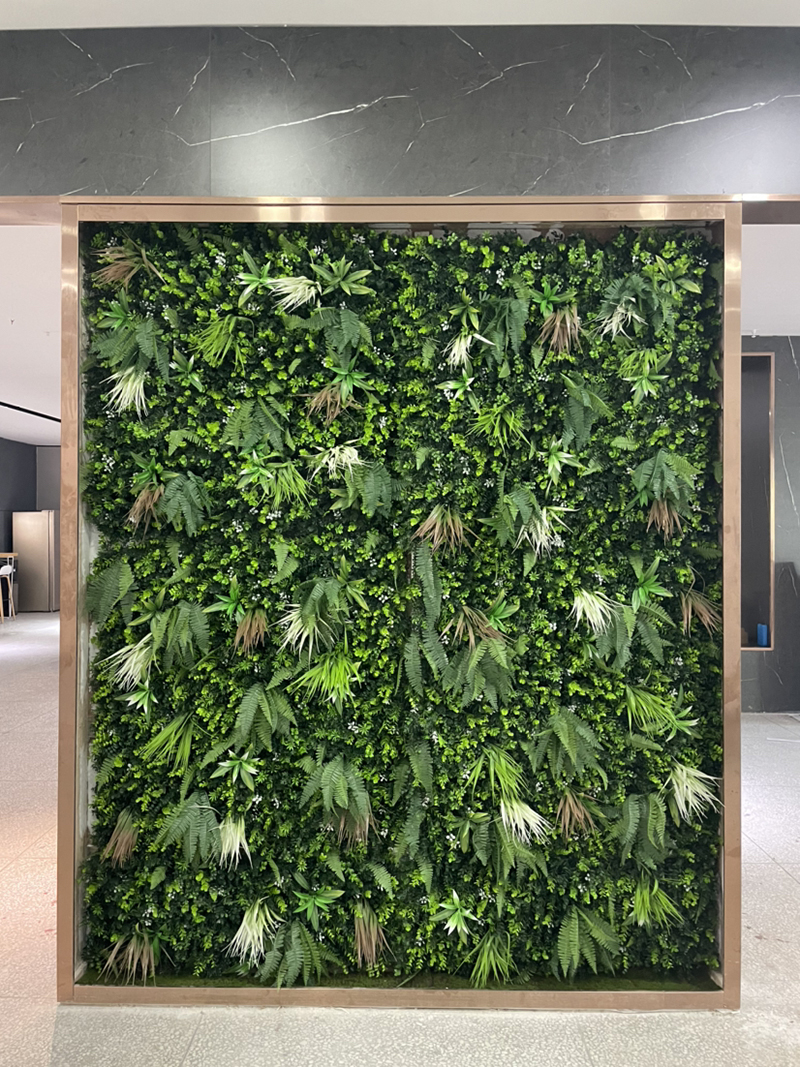Aromatic Plant Selection for 3D Artificial Vertical Gardens: Designing Fragrant Green Walls for Indoor and Outdoor Spaces
Artificial vertical gardens offer a unique opportunity to incorporate scent-inspired aesthetics into spaces where real aromatic plants might struggle, such as low-light interiors, high-traffic areas, or regions with harsh climates. By selecting designs inspired by fragrant species, these gardens can evoke the calming or invigorating scents of nature without the need for watering, pruning, or specialized care. Below are strategies for integrating artificial aromatic plants into 3D vertical gardens for a multisensory, visually appealing display.

Even without natural oils or blooms, artificial plants can replicate the textures, shapes, and color patterns of species known for their aromatic qualities. This ensures a cohesive, nature-inspired look that hints at the scents of real herbs, flowers, or foliage.
Herb-Inspired Foliage: Use artificial plants with serrated or textured leaves, such as those resembling rosemary, thyme, or basil, to evoke the look of culinary herbs. These designs work well in kitchen spaces or areas where a fresh, herbaceous scent is desired.
Lavender and Floral Accents: Incorporate artificial plants with slender stems and purple or blue flower spikes, like those inspired by lavender or lilac, to add a touch of softness and color. These designs mimic the calming fragrance of real flowers and work beautifully in bedrooms or relaxation zones.
Citrus-Scented Imitations: Introduce artificial plants with glossy, oval leaves and white flowers, such as those resembling lemon balm or mock orange, to evoke the uplifting scent of citrus groves. These elements add brightness and energy to living rooms or entryways.
Aromatic gardens often feature plants grouped by scent type or intensity. Artificial designs can use this principle to create themed sections within a vertical garden, enhancing both visual appeal and sensory experience.
Calming vs. Energizing Scents: Place artificial lavender or chamomile designs in one area to create a soothing zone, while grouping artificial mint or lemon verbena in another for an invigorating effect. This allows users to interact with different scents based on mood or time of day.
Height and Layering for Depth: Use taller artificial plants, like those mimicking rosemary or sage, as backdrops, and shorter, more delicate designs, such as artificial thyme or oregano, in the foreground. This layering mimics the way real aromatic herbs grow in natural clusters.
Scattered Blooms for Focal Points: Introduce artificial flowers, like those inspired by jasmine or gardenia, sparingly throughout the arrangement to add visual interest and hint at their sweet, heady fragrances. These accents work best when placed near seating areas or doorways.
Aromatic plants often feature distinct color palettes and leaf textures that reflect their scent profiles. Artificial designs can draw from these natural traits to create a harmonious, scent-inspired aesthetic.
Soft Purples and Blues for Calming Scents: Stick to shades like lavender, lilac, or pale blue to evoke the look of relaxing aromatic flowers. These colors work well in bedrooms or meditation spaces.
Bright Greens and Yellows for Energizing Scents: Incorporate artificial plants in shades of lime green, chartreuse, or golden yellow to mimic the vibrancy of citrus or mint-scented foliage. These hues add a lively touch to kitchens or home offices.
Silver-Gray Foliage for Herbaceous Notes: Use artificial plants with silvery or gray-green leaves, like those resembling sage or wormwood, to add a subtle, earthy tone. These designs complement modern or rustic decor styles.
Aromatic gardens thrive on texture, from fuzzy leaves to smooth, glossy surfaces. Artificial designs can replicate this diversity to add depth and tactile appeal without the need for seasonal changes.
Fuzzy or Velvety Leaves: Combine artificial plants with soft, downy textures, like those mimicking lamb’s ear or catmint, with smoother designs, such as artificial rosemary or basil. This contrast adds visual and tactile interest.
Rough or Serrated Edges: Use artificial plants with jagged or toothed leaves, like those inspired by oregano or thyme, to add a rugged quality. These elements work well as accents between softer, rounder plants.
Fine, Lacy Foliage: Introduce artificial plants with delicate, feather-like leaves, such as those resembling dill or fennel, to add a sense of airiness. These designs soften the overall look and evoke the lightness of real aromatic herbs.
By focusing on aromatic-inspired plant designs, themed groupings, scent-complementary color palettes, and textural contrast, artificial plants can transform 3D vertical gardens into multisensory installations. Their durability and low-maintenance nature make them ideal for spaces where real aromatic plants might not thrive, ensuring year-round beauty and a hint of nature’s scents without the need for irrigation, fertilizers, or ongoing care.
Contact: Amy
Phone: 86-15311787313
E-mail: info@foszmac.com
Whatsapp:86-15311787313
Add: Fengtai District, Dacheng Road, No.24 Building, Room 203, Beijing, China